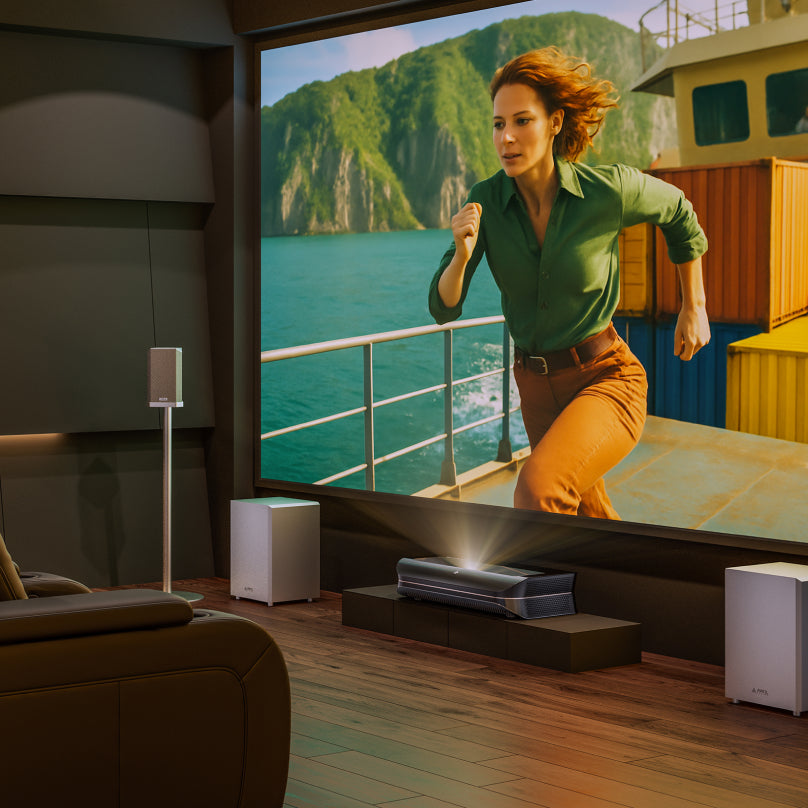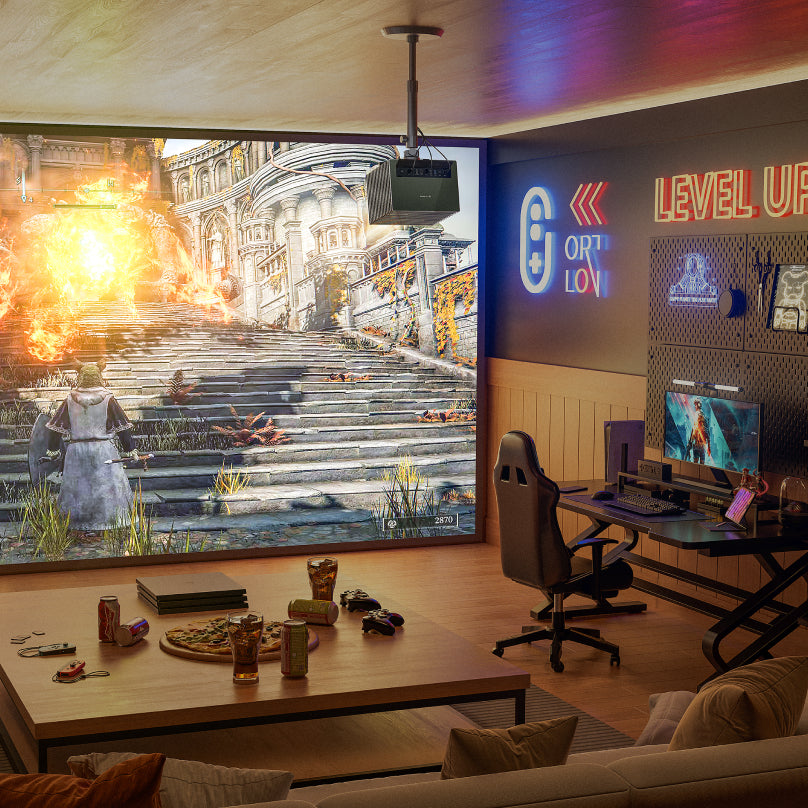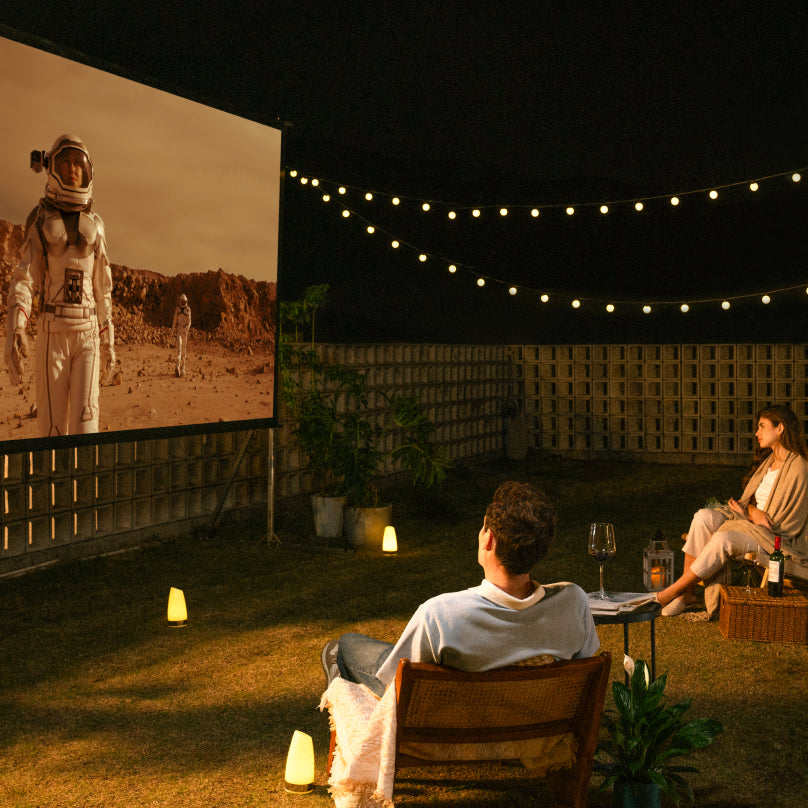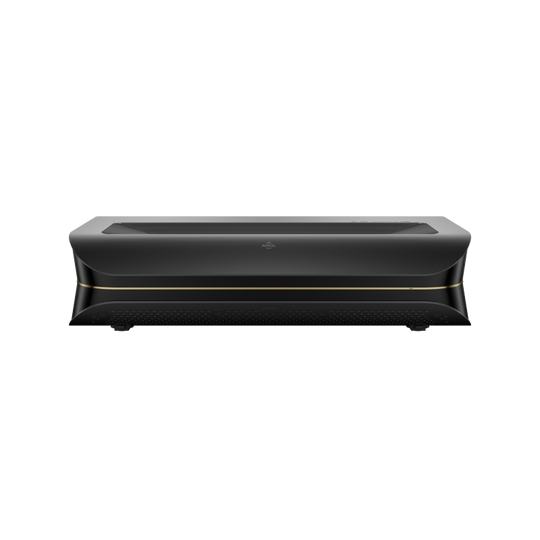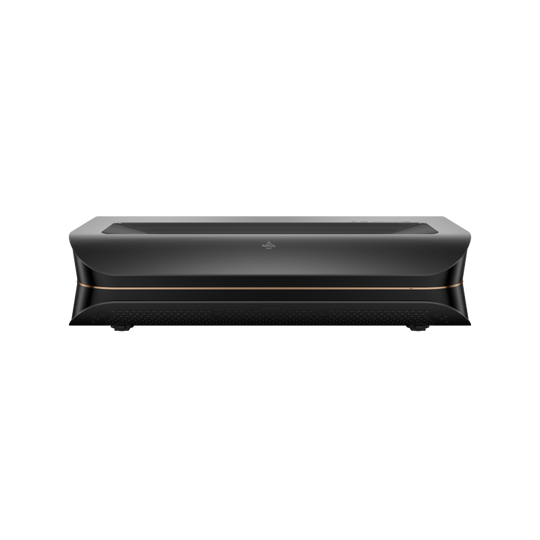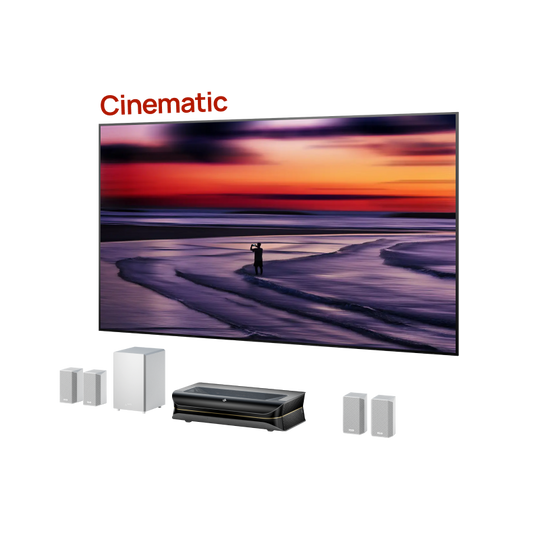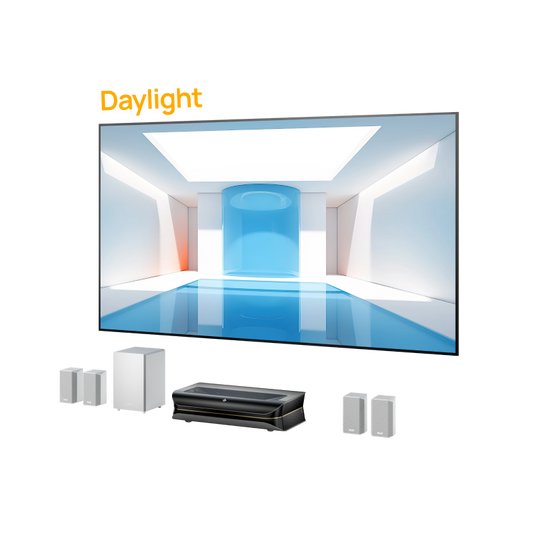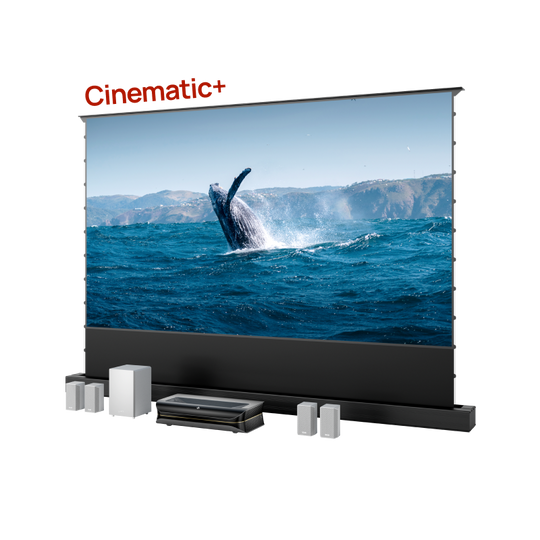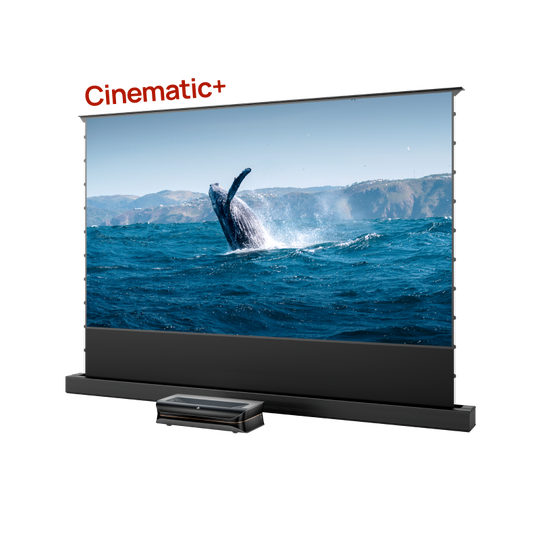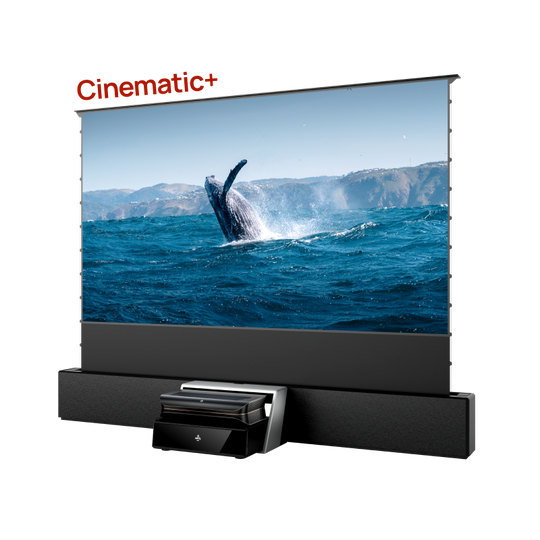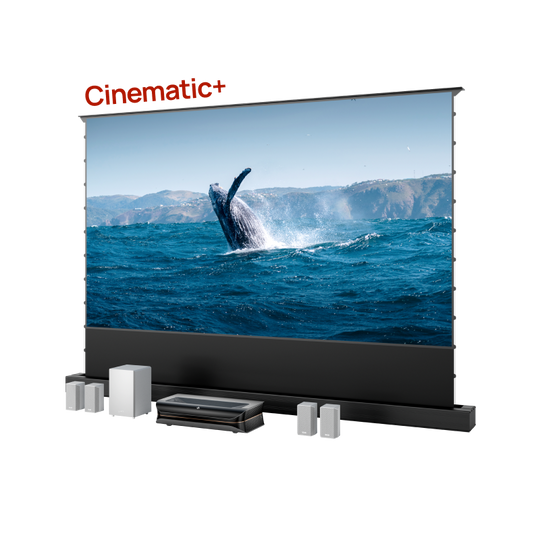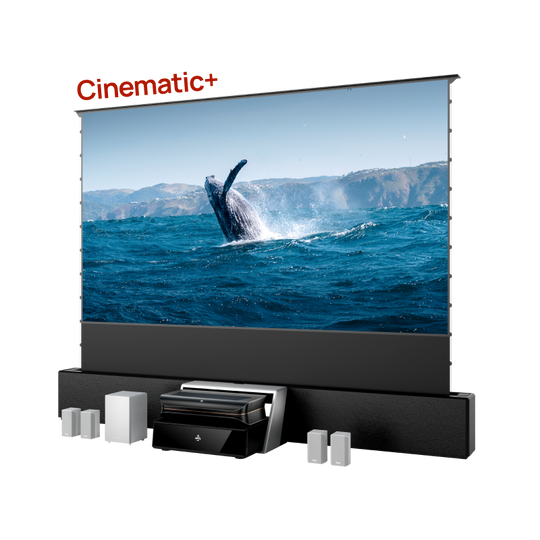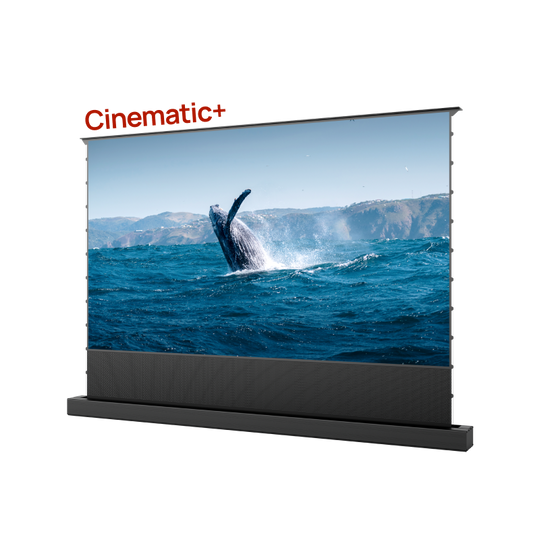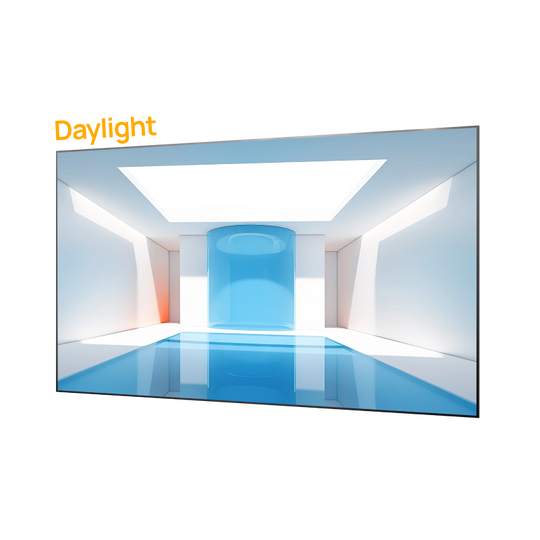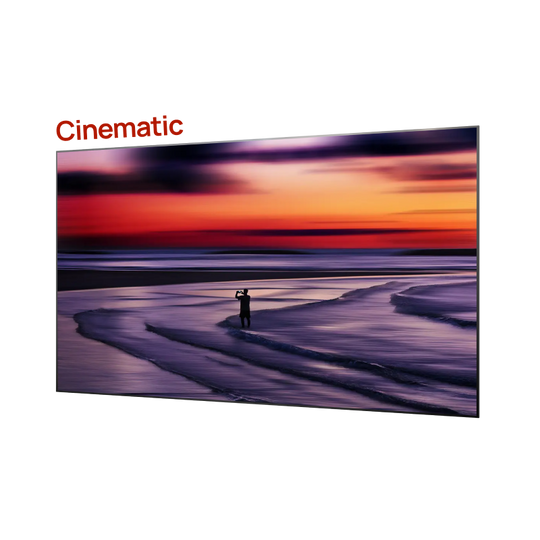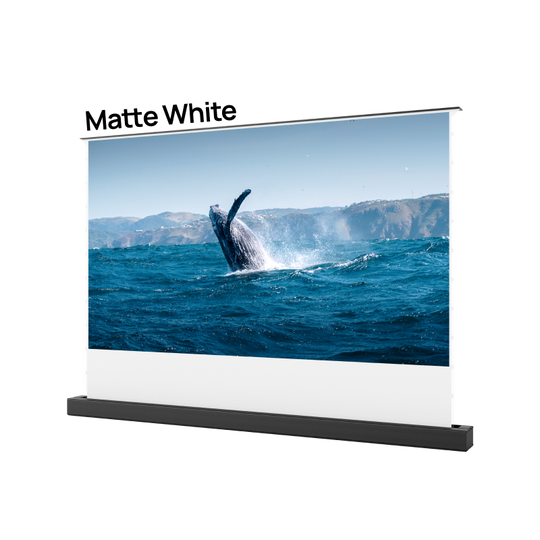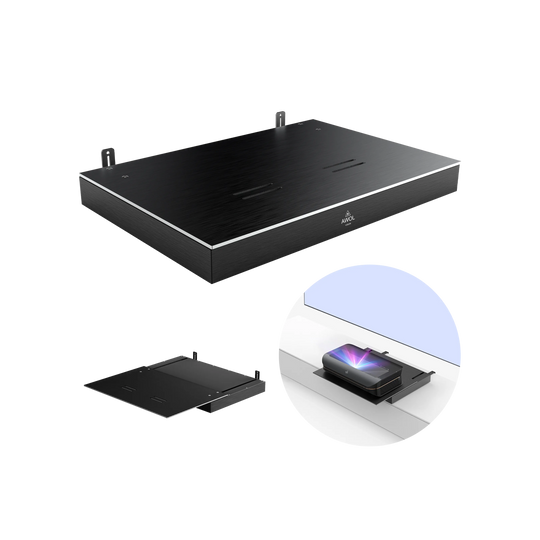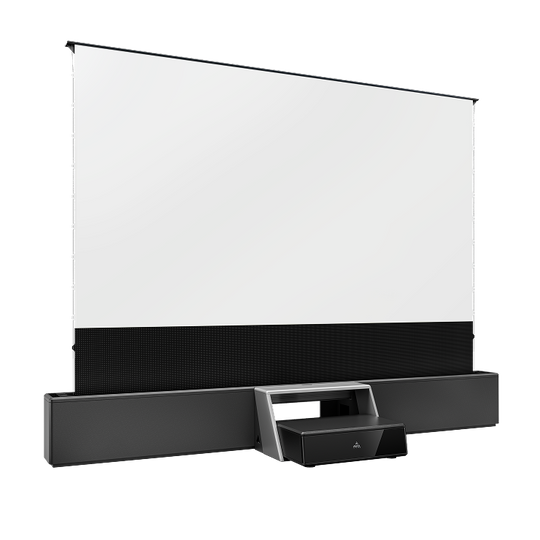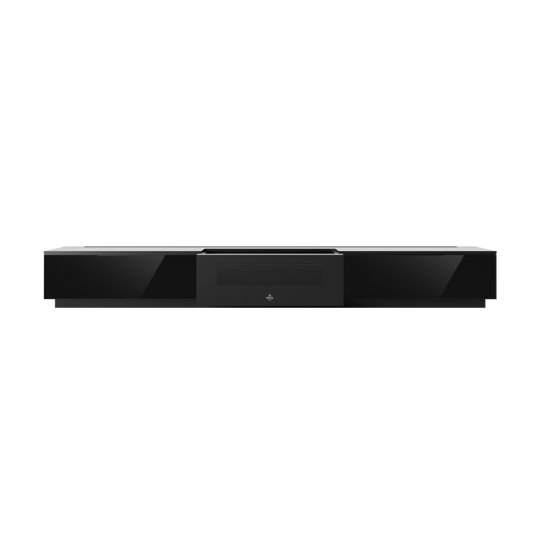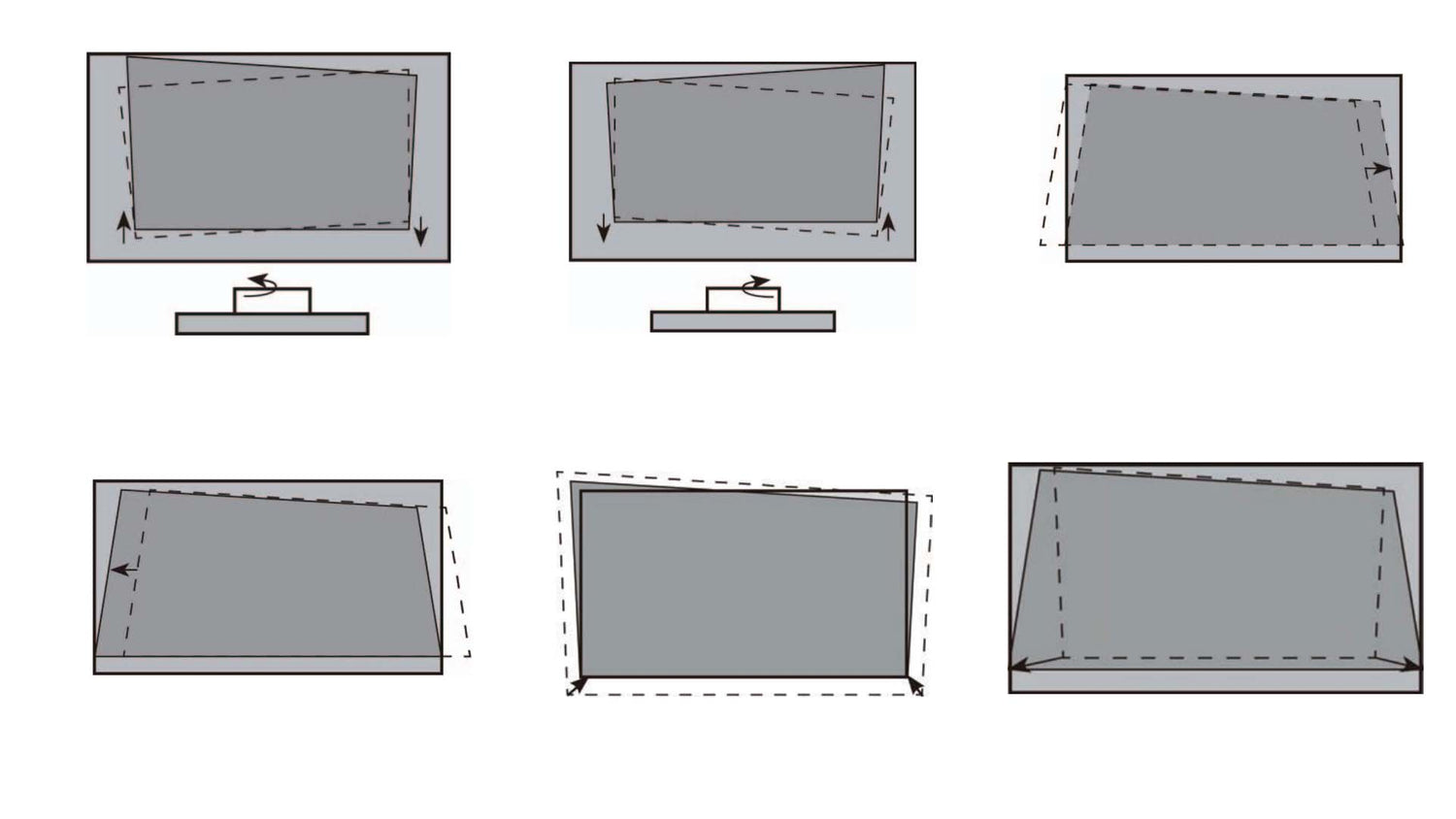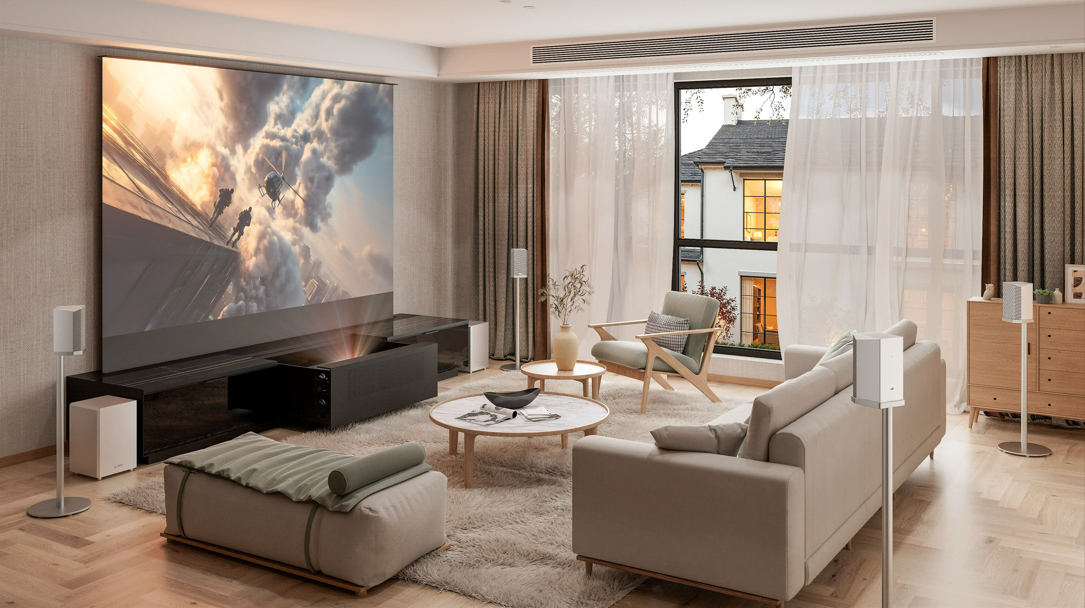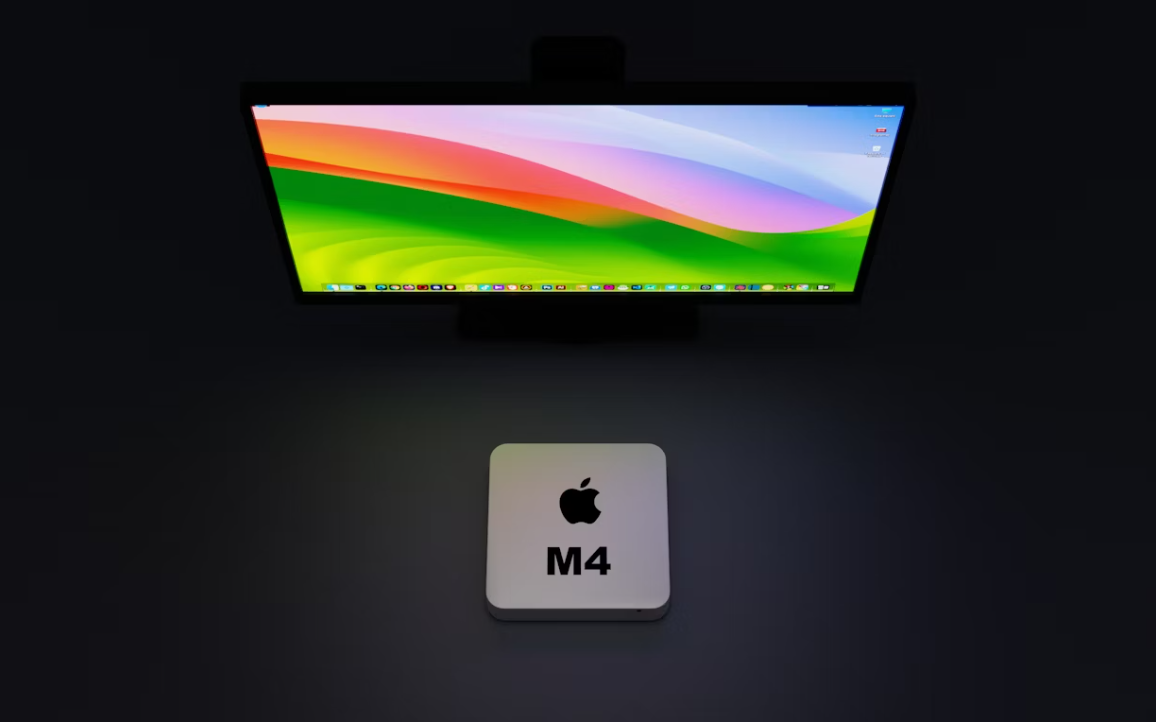The pursuit of a perfect image is the central goal of any projection setup. Yet, a common obstacle stands in the way: the moment a projector is aimed at a screen from an angle, the image distorts into a crooked trapezoid. This is the keystone effect, and while it may seem like a projector flaw, it is a predictable consequence of optical physics.
This guide moves beyond a simple definition. We will explore the science behind the distortion, deconstruct the compromises of digital "fixes," and provide a definitive hierarchy of methods for achieving a distortion-free, high-fidelity image.
What is the Keystone Effect? An Optical Phenomenon Explained
The Nature of the Distortion
The trapezoidal distortion is named after the architectural keystone—the wedge-shaped stone at the apex of an arch. This is a precise geometric descriptor. The phenomenon is identical in principle to the "converging verticals" seen in architectural photography, where tilting a camera upwards at a tall building makes its parallel lines appear to converge.
The Physics of Off-Axis Projection
The physical mechanism is a direct result of varying light-ray distances. When a projector is tilted upward, the light forming the top edge of the image must travel farther than the light forming the bottom edge. As the cone of light expands with distance, this longer path causes the top of the image to become wider than the bottom, creating a trapezoid.
The Hidden Consequence: Focus Uniformity
This presents a dual challenge. A projector lens is designed to create a single, flat plane of sharp focus. When the projector is angled, it becomes impossible to maintain perfect sharpness across the entire image simultaneously. This reveals a critical point: the keystone effect is a compound problem of both geometry and focus.
What is Digital Keystone Correction and How Does It Work?
The Mechanism: Pre-Warping and Pixel Scaling
Digital keystone correction operates by manipulating the source image before it reaches the projector's imaging chip (e.g., DLP or LCD). The processor applies a geometric transformation, often called pre-warping. It calculates the distortion and creates a corresponding inverse trapezoid from the original image. When this pre-distorted image is projected, the optical distortion cancels out the digital pre-distortion, making it appear rectangular.
The Cost: Why Keystone Correction Degrades Picture Quality
This digital sleight of hand is not without significant cost. The act of scaling the image data fundamentally degrades it in three primary ways:
-
Resolution Loss: You are no longer using the projector's full native pixel grid. The image is squeezed into a smaller portion of the chip, discarding pixels and causing a tangible loss of sharpness and fine detail.
-
Brightness Reduction: The projector's light source illuminates the entire chip. Light hitting the unused pixels is wasted, making the final image dimmer than it would be without correction.
-
Visual Artifacts: The digital scaling process can cause softness, blurring, or aliasing, where smooth lines appear as jagged, stair-stepped patterns.
The Telltale Sign: The "Gray Border" Phenomenon
Perhaps the most damning evidence of this process is the "gray border." In a dark room, you will often notice a faint, trapezoidal glow on the wall surrounding the corrected image. This border is the light from the unused but still illuminated pixels, proving that the "fix" is merely an illusion hiding inside a still-distorted cone of light.
A Superior Alternative: Understanding Optical Lens Shift
A Physical, Lossless Solution
Found on many mid-range to high-end projectors, optical lens shift allows the internal lens assembly to be physically moved vertically and/or horizontally. Because it physically repositions the lens, it redirects the entire cone of projected light without altering the digital image. This means image position can be adjusted with zero loss of resolution or brightness.
The Perfect Analogy: Optical vs. Digital Zoom
To understand the difference, consider the zoom on a camera:
-
Optical Zoom uses moving lens elements to magnify an image losslessly.
-
Digital Zoom crops a section of the sensor and digitally enlarges it, degrading quality.
Lens shift is the "optical zoom" of image placement—a high-fidelity, mechanical process. Digital keystone correction is the "digital zoom"—a low-fidelity, software compromise.
A Critical Distinction: Placement vs. Angle
Crucially, these tools solve different problems.
-
Use Lens Shift to correct for off-center placement (too high, low, left, or right).
-
Use Keystone Correction only to compensate for an incorrect angle (tilting the projector).
What About Auto Keystone? The Limits of Automation
Modern projectors heavily market Auto Keystone, often powered by AI, cameras, or Time-of-Flight (ToF) sensors. While these systems are incredibly fast and convenient, one fact remains: they simply automate the application of lossy digital keystone correction.
An "AI-powered" system does not provide a higher-quality result. It is merely an intelligent front-end for the same back-end process of discarding resolution and reducing brightness. It automates the compromise; it does not eliminate it.
How to Get a Perfect Projector Image: A Definitive Workflow
The Golden Rule: Perfect Physical Placement First
The non-negotiable ideal for any projector installation is to achieve a perfect image through physical placement alone. This involves positioning the projector so its lens is perfectly centered and perpendicular to the screen. This is the only way to guarantee you see 100% of your projector's native resolution and potential brightness.

This principle holds true even for advanced projectors. For instance, consider a high-end Ultra-Short Throw (UST) projector like the AWOL Vision LTV-3500 Pro. Despite its premium triple-laser technology, it is engineered with a fixed-focus lens and does not include an optical lens shift feature. Instead, its setup manual provides detailed guidance on physically moving the unit by precise increments to perfectly align the image with the screen. This design philosophy reinforces a critical point: achieving geometric purity through proper physical setup is the primary, intended method, with its advanced 8-point digital keystone correction serving as a powerful secondary tool for final, minor adjustments.
The Three-Tiered Hierarchy of Adjustment
When perfect placement isn't feasible, follow this strict hierarchy:
-
Tier 1 (Ideal): Perfect Physical Placement. Position the projector perfectly centered and perpendicular to the screen.
-
Tier 2 (Best Compromise): Optical Lens Shift. If the projector is off-center but perpendicular, use this lossless feature.
-
Tier 3 (Last Resort): Digital Keystone Correction. Use only when an angled projection is unavoidable and the projector lacks lens shift.
A Contextual Guide: When is Keystone Correction Acceptable?
-
Acceptable: For portable projectors, temporary setups (backyard movies), and business presentations where convenience outweighs fidelity.
-
Unacceptable: In dedicated home theaters, for high-fidelity gaming, or in any critical viewing environment.
"Damage Control": How to Minimize Negative Effects
If you absolutely must use digital correction:
-
Use the Minimum Amount Necessary. Position the projector as close to the ideal spot as possible to reduce the required correction angle.
-
Employ Light-Absorbing Borders. Use a projection screen with a wide, black velvet frame. The non-reflective material will absorb the light from the "gray border," making it effectively invisible.
Conclusion: From Digital Compromise to Optical Purity
The keystone effect presents a clear choice: the convenient but compromised digital path versus the demanding but pure optical path. As we've shown, digital keystone correction is a workaround, not a solution, inherently sacrificing resolution and brightness for placement flexibility.
The central conclusion for any discerning user is that the pursuit of the perfect rectangle begins not with a remote control, but with a tape measure and careful planning. The hierarchy is absolute: perfect physical placement is the ideal, optical lens shift is the best compromise, and digital keystone correction is, and should always be, the last resort.
